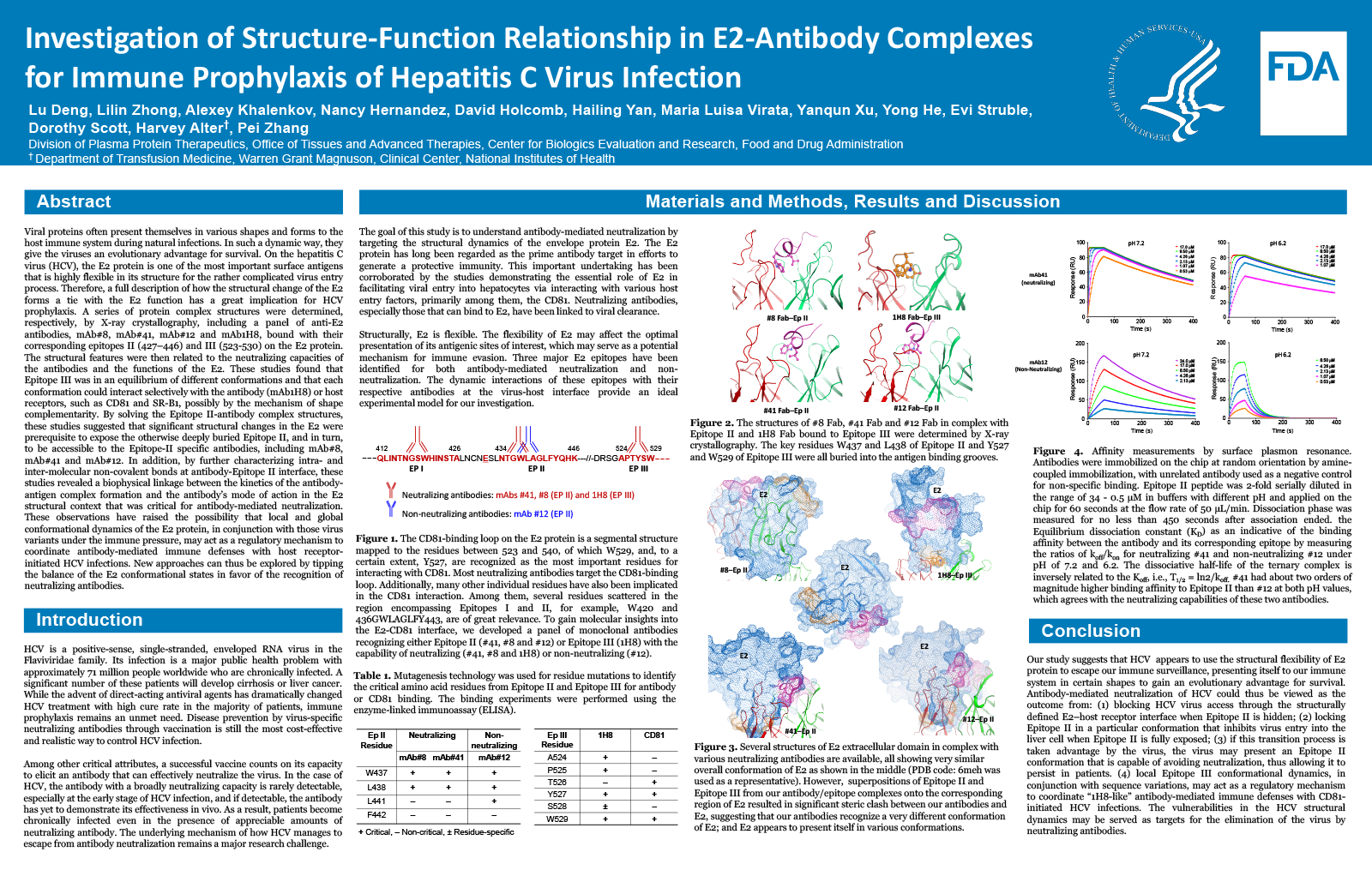2021 FDA Science Forum
Investigation of Structure-Function Relationship in the E2-Antibody Complexes for Immune Prophylaxis of Hepatitis C Virus Infection
- Authors:
- Center:
-
Contributing OfficeOffice of the Commissioner
Abstract
Background and Purpose
Viral proteins often present themselves in various shapes and forms to the host immune system during natural infections. In such a dynamic way, they give the viruses an evolutionary advantage for survival. On the hepatitis C virus (HCV), the E2 protein is one of the most important surface antigens that is highly flexible in its structure for the rather complicated virus entry process. Therefore, a full description of how the structural change of the E2 forms a tie with the E2 function has a great implication for HCV prophylaxis.
Methodology and Results
A series of protein complex structures were determined, respectively, by X-ray crystallography, including a panel of anti-E2 antibodies, mAb#8, mAb#41, mAb#12 and mAb1H8, bound with their corresponding epitopes II (427–446) and III (523-530) on the E2 protein. The structural features were then related to the neutralizing capacities of the antibodies and the functions of the E2. These studies found that Epitope III was in an equilibrium of different conformations and that each conformation could interact selectively with the antibody (mAb1H8) or host receptors, such as CD81 and SR-B1, possibly by the mechanism of shape complementarity. By solving the Epitope II-antibody complex structures, these studies suggested that significant structural changes in the E2 were prerequisite to expose the otherwise deeply buried Epitope II, and in turn, to be accessible to the Epitope-II specific antibodies, including mAb#8, mAb#41 and mAb#12. In addition, by further characterizing intra- and inter-molecular non-covalent bonds at antibody-Epitope II interface, these studies revealed a biophysical linkage between the kinetics of the antibody-antigen complex formation and the antibody’s mode of action in the E2 structural context that was critical for antibody-mediated neutralization.
Conclusion
These observations have raised the possibility that local and global conformational dynamics of the E2 protein, in conjunction with those virus variants under the immune pressure, may act as a regulatory mechanism to coordinate antibody-mediated immune defenses with host receptor-initiated HCV infections. New approaches can thus be explored by tipping the balance of the E2 conformational states in favor of the recognition of neutralizing antibodies.

